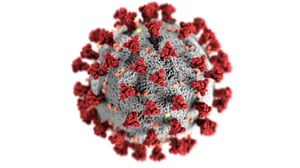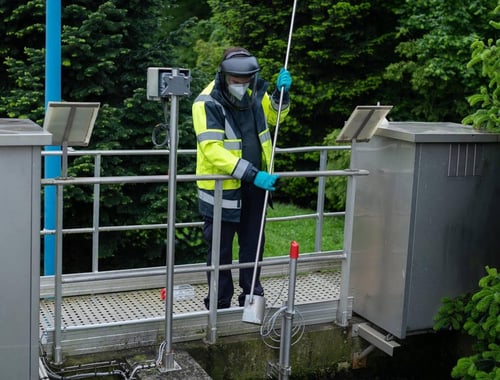When traces of the SARS-CoV-2 coronavirus were detected in wastewater, it was initially seen as a cause for concern. Some questions still remain, but it is now considered primarily as an effective tool for monitoring and forecasting circulation of the virus responsible for the Covid-19 pandemic.
In April 2020, the announcement that traces of SARS-CoV-2 had been found in the City of Paris wastewater system triggered a media storm. This was immediately followed by reassuring comments from infectious disease experts, who said that the coronavirus responsible for the Covid-19 pandemic would struggle to thrive in any kind of water, whether wastewater, drinking water or contaminated water. So the risk of transmission by this vector would therefore be low.
Nevertheless, we now know that traces of SARS-CoV-2 can indeed be detected in water, and more specifically in the wastewater arriving in treatment plants. We also know that the coronavirus can be excreted by an infected person, sometimes in large quantities, even before the person concerned is symptomatic and for some time after their recovery. It therefore became clear that analyzing wastewater can provide information - at a very early stage - about how the coronavirus is circulating within a given population, making it a valuable decision-support tool.
Coronavirus in wastewater: what do the analyses tell us?

What laboratories are detecting in wastewater is part of the SARS-CoV-2 genome. Using biochemical analysis, they can quantify the amount of coronavirus RNA in the sample tested. The results are then interpreted in light of data on water flow rates and any other factor that may impact figures (rainfall, nitrogen content, etc.).
A cluster was identified in Brittany at the beginning of April 2020 when a concentration of nearly one million genome units per liter was detected at the flow feed of a wastewater treatment plant. This concentration was a thousand times higher than the detection threshold. When the analysis was repeated at the same plant at the end of the first lockdown, results showed that values had returned to normal - i.e. non-detectable - levels.
The future for virus detection in wastewater

The pandemic was not the first time that experts have used this type of wastewater analysis to gain information about how a virus is circulating. It was by studying the presence of Ebola virus in wastewater during the 2014 outbreak that researchers were able to show the relevance of ‘reading’ wastewater to trace the circulation of pathogens in a population.
Closer to home, samples are also taken at the wastewater treatment plant outfalls and in the natural environment to detect the presence in water of noroviruses, such as those responsible for gastroenteritis. This type of analysis is still commonly used on shellfish farms, for example, and is being taken up increasingly by local authorities.
So it is possible that wastewater analysis could provide a new epidemiological tool. In future, it will be possible to monitor the health status of a given population relative to a particular disease, so the procedures introduced during the Covid-19 pandemic could quickly become standard practice.
For more information: